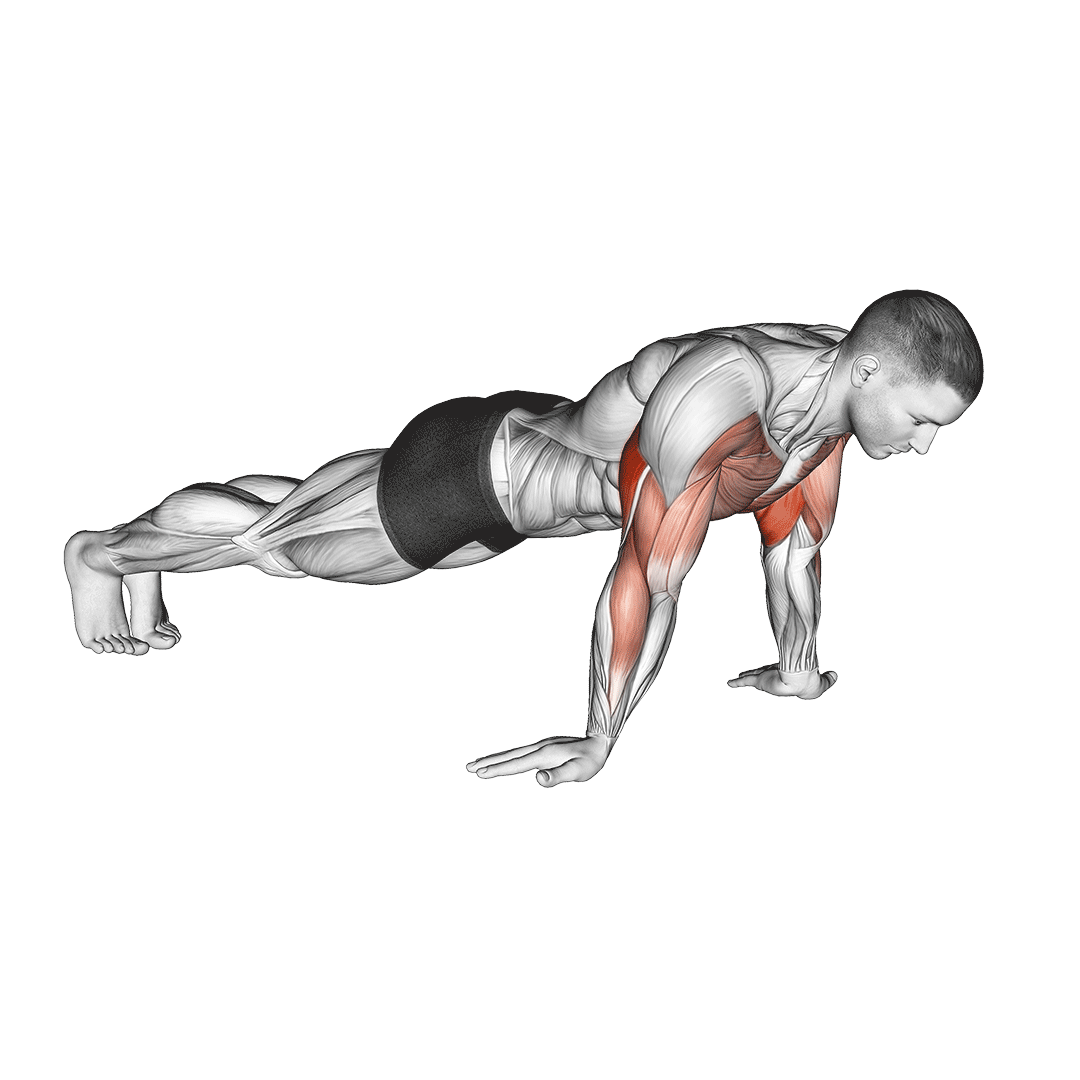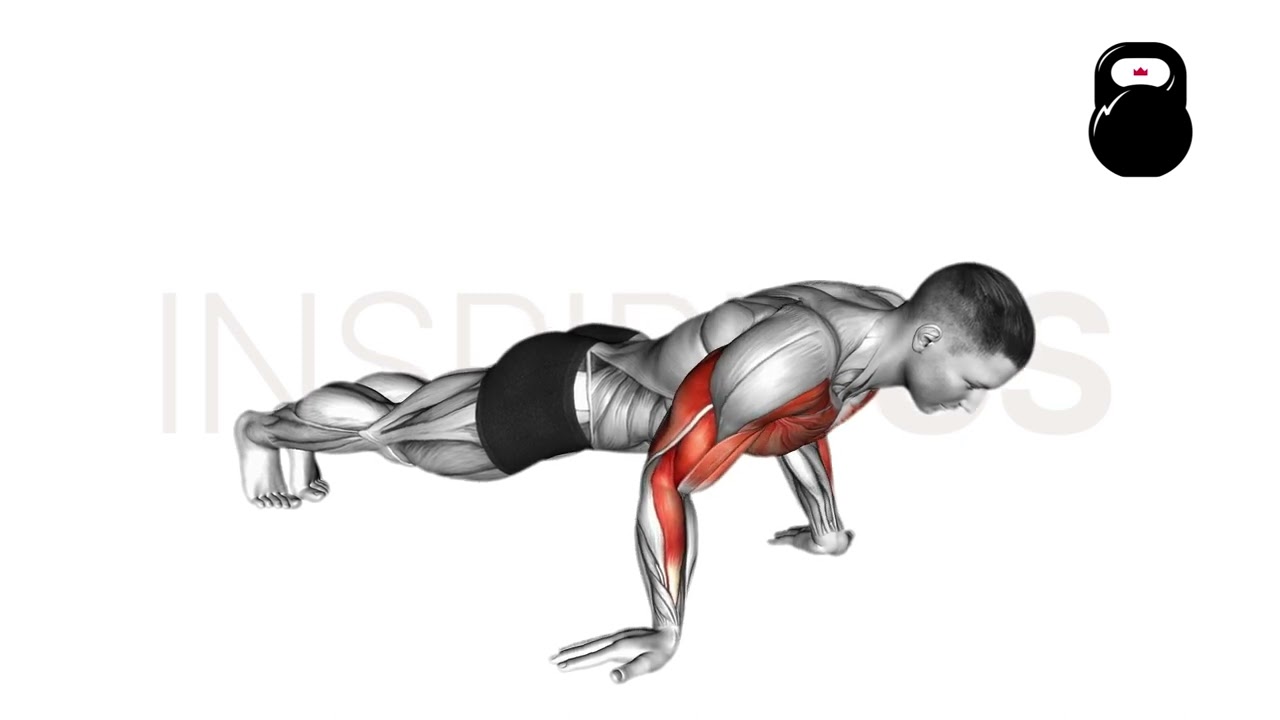Reverse Grip Push Ups: Muscles Worked and More
Reverse grip push-ups are a variation of push-up where the fingers are pointing backwards - involving the biceps brachii to a significantly greater degree at the cost of greater wrist mobility demands.
Apart from involving the biceps brachii to a greater degree, reverse grip push-ups are also far more friendly on the elbow and wrist joints.
So long as the lifter is sufficiently flexible, the exercise can be used as an effective alternative for reducing pressure on the arms.
Reverse Grip Push Ups at a Glance
Equipment Requirements
None
Main Muscles Targeted
Pectorals, Triceps Brachii, Biceps Brachii, Anterior Deltoids
Difficulty
Moderate
Sets, Reps, and Load Recommendations
3-5 Sets of 10-20 Repetitions with Bodyweight Resistance
How to Do Reverse Grip Push-Ups
- To perform a repetition of the reverse grip push-up, the lifter will assume a high plank stance, legs fully extended, core braced and the hands set wider than shoulder-width apart. The lower back should be flat with the glutes lightly engaged so as to form a line through the entire trunk.
- From this stance, the lifter rotates their hands outwards, pointing the fingers backwards. Adjusting the hands somewhat further back may help with lifters that possess poor wrist and forearm mobility.
- With the hands now positioned in a reverse grip, the lifter bends at the elbows and lowers their chest towards the floor, allowing the torso to roll forwards by several inches so as to facilitate stable shoulder movement.
The elbows must remain tucked close to the sides of the trunk throughout the entire repetition. - Once the chest is nearly touching the floor, the lifter drives through their palms and pushes back upwards - rising until their arms are fully extended.
- The repetition is now considered complete.
Additional Tips:
Reverse grip push-ups may be somewhat uncomfortable for those more familiar with conventional push-ups.
One good way to set up the exercise is to elevate the palms with a small object - reducing how far the wrists need to bend at full depth.
Another important tip is to avoid flaring the elbows out. The reverse grip involved may make lifters unconsciously flare the elbows out, leading to an increased level of pressure on both the elbows themselves and the shoulder joints.
Sets and Reps Recommendation:
For novices or intermediates unfamiliar with reverse grip push-ups, 3-5 sets of 10-20 repetitions is an excellent starting point.
What Muscles do Reverse Grip Push-Ups Work?
Reverse grip push-ups are a compound exercise, meaning that more than one muscle group is worked throughout their range of motion.

These are primarily the triceps brachii, deltoids and pectorals - but the use of a reverse grip also includes the biceps near the bottom range as well.
Common Reverse Grip Push-Up Mistakes to Avoid
To get the most out of reverse grip push-ups, avoid the following common mistakes.
Incomplete Range of Motion
As is the case with most other exercises, the reverse grip push-up is made far less effective when performed with an incomplete range of motion. Doing so will not only reduce their intensity of the hypertrophic response to training, but can even entirely alienate specific muscle groups.

Each repetition of the reverse grip push-up should begin and end with the elbows fully extended, whereas the chest must be lowered to within several inches of touching the floor so as to ensure proper pectoral muscle contraction.
Flaring the Elbows
In order to reduce strain on the elbow and shoulder joints, the reverse grip push-up should be performed with the elbows kept close to the sides of the trunk, as if tucking them against the ribs.
Allowing the elbows to flare outwards will create a disadvantageous and irritating angle of the humerus within the shoulder joint, as well as reduce how well the trunk’s weight is distributed through the arms.
Curving the Lower Back
Like with other variations of the push-up, allowing the lower back to hyperextend or enter a state of flexion can lead to an increased risk of spinal injury.
In most cases, failing to keep lower back neutrality during a push-up is simply due to poor engagement of the core muscles - or that the glutes are not being squeezed for pelvic stability.
In order to properly contract the abdominal muscles during a set of push-ups, the lifter can use the cue of “pulling their navel towards their spine”, squeezing the abdominal muscles as they also contract the glutes.
An ideal push-up repetition will involve the trunk practically forming a straight line from glutes to neck, with no sagging of the chest or stomach.
Who Should Do Reverse Grip Push-Ups?
Reverse grip push-ups are a rather niche exercise, but are nonetheless simple and safe enough to be performed by novices with little training experience.
Ideally, the reverse grip push-up will be performed by a calisthenics athlete wishing to better target their biceps after movements like the inverted row or chin-up have already been completed.
Remember to first speak to a medical professional if you have a history of shoulder, elbow or wrist injuries, as the majority of push-up variations will strain these areas.
References
1. Marcolin G, Petrone N, Moro T, Battaglia G, Bianco A, Paoli A. Selective Activation of Shoulder, Trunk, and Arm Muscles: A Comparative Analysis of Different Push-Up Variants. J Athl Train. 2015 Nov;50(11):1126-32. doi: 10.4085/1062-6050-50.9.09. Epub 2015 Oct 21. PMID: 26488636; PMCID: PMC4732391.

